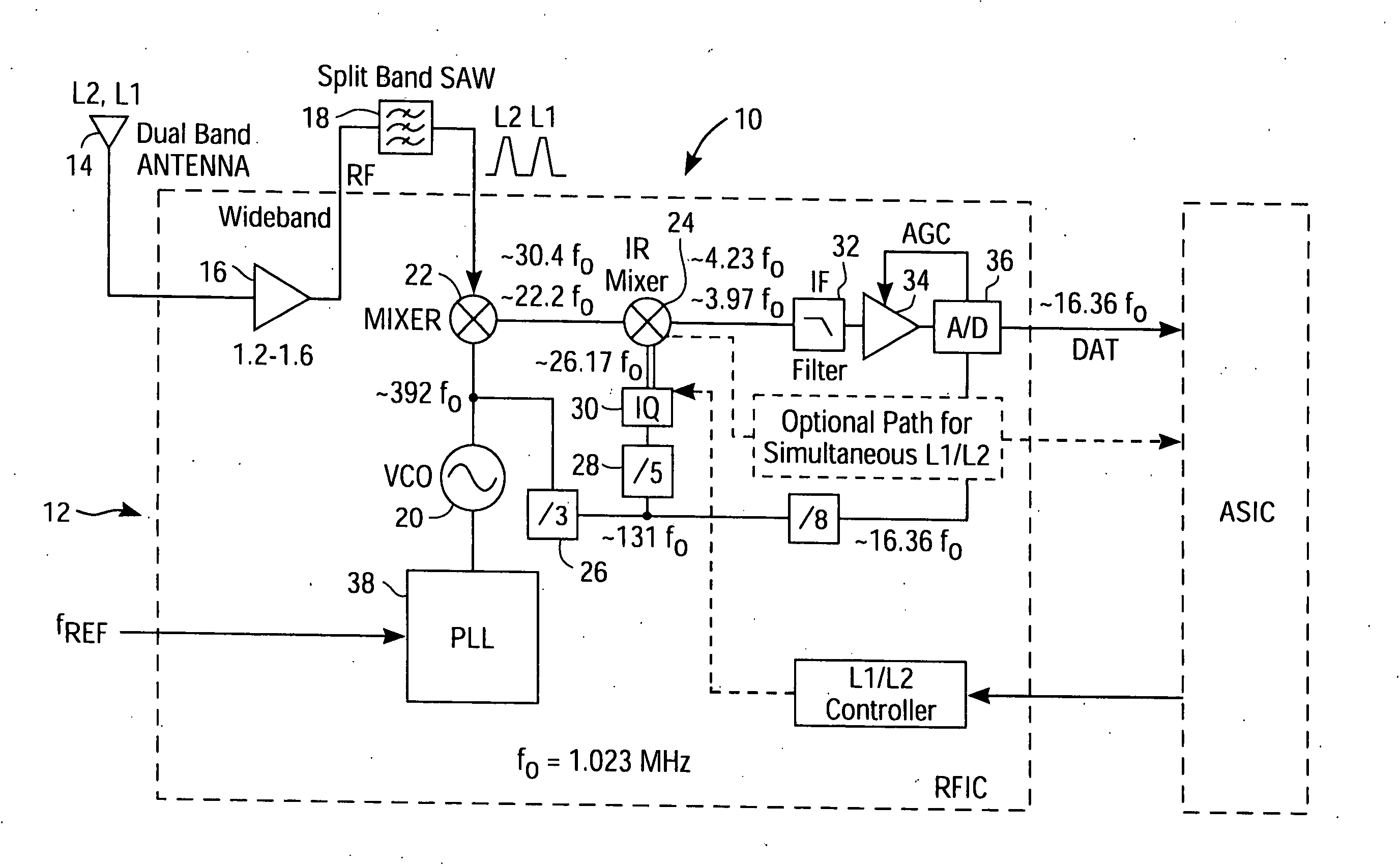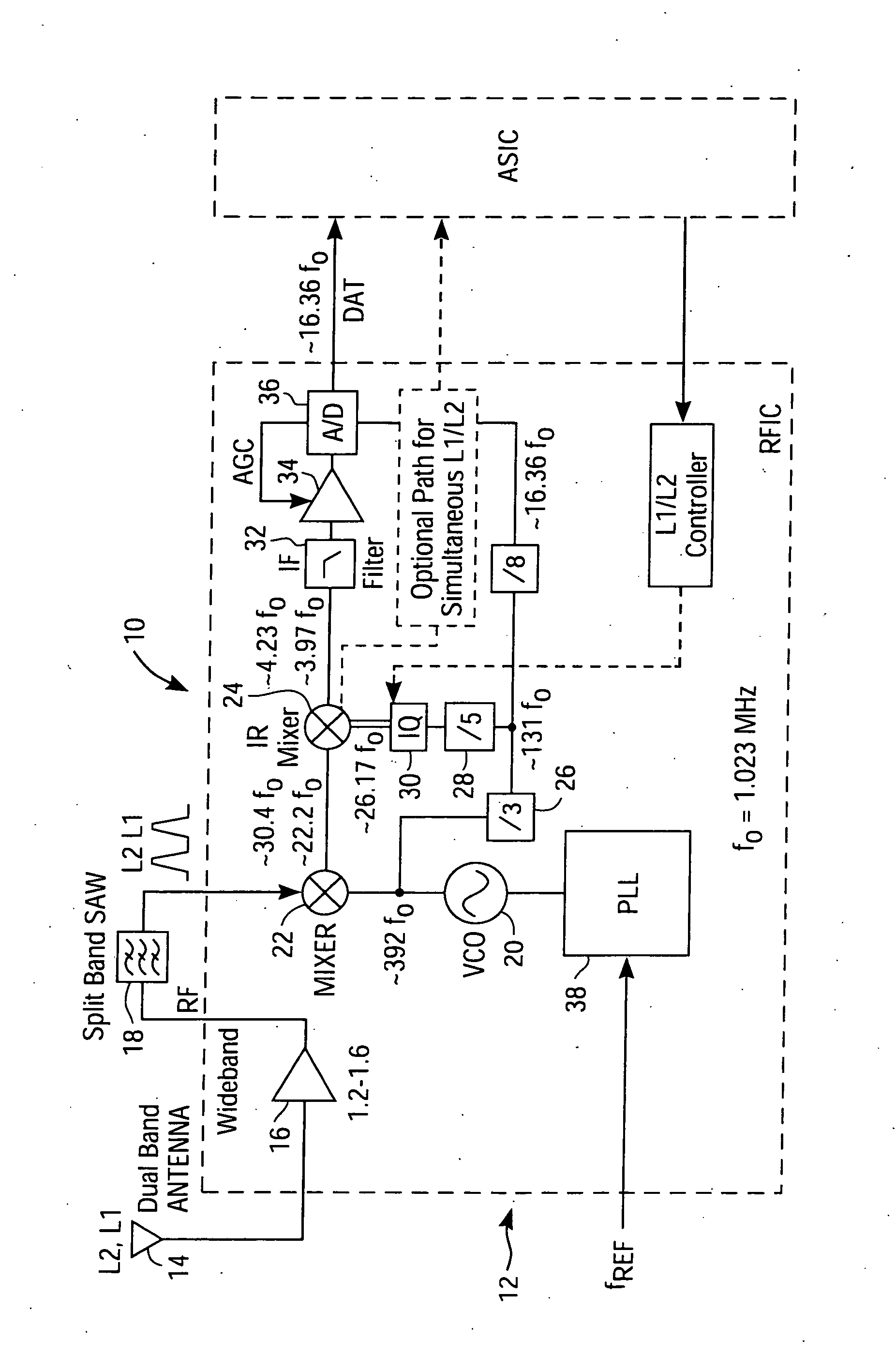L1/L2 GPS receiver
a global positioning system and receiver technology, applied in the field of radio frequency receivers, can solve problems such as degrading the noise figure of the receiver, and achieve the effects of reducing power consumption, optimizing integration and performance, and reducing power dissipation
- Summary
- Abstract
- Description
- Claims
- Application Information
AI Technical Summary
Benefits of technology
Problems solved by technology
Method used
Image
Examples
Embodiment Construction
[0019] The present invention is directed to an improved system and method for simultaneously receiving or switching dual frequency carrier signals. The improved system and method provides efficient and effective simultaneous receiving or switching, without radio frequency switches or local oscillator switching. The preferred embodiments of the improved system and method are illustrated and described herein by way of example only and not by way of limitation.
[0020] Referring now to the FIGURE, which illustrates a system 10 for simultaneously receiving or switching between dual frequency carrier signals, comprising a receiver 12 which is preferably a GPS receiver for the L1 and L2 carriers. The front-end of the receiver 12 consists of a dual band antenna 14 for receiving the dual frequency carrier signals, and a wide band low noise amplifier (LNA) 16, with 1.2 GHz to 1.6 GHz bandwidth, for amplifying the L1 and L2 carriers. A split band surface acoustic wave (SAW) filter 18 is then u...
PUM
 Login to View More
Login to View More Abstract
Description
Claims
Application Information
 Login to View More
Login to View More - R&D
- Intellectual Property
- Life Sciences
- Materials
- Tech Scout
- Unparalleled Data Quality
- Higher Quality Content
- 60% Fewer Hallucinations
Browse by: Latest US Patents, China's latest patents, Technical Efficacy Thesaurus, Application Domain, Technology Topic, Popular Technical Reports.
© 2025 PatSnap. All rights reserved.Legal|Privacy policy|Modern Slavery Act Transparency Statement|Sitemap|About US| Contact US: help@patsnap.com


